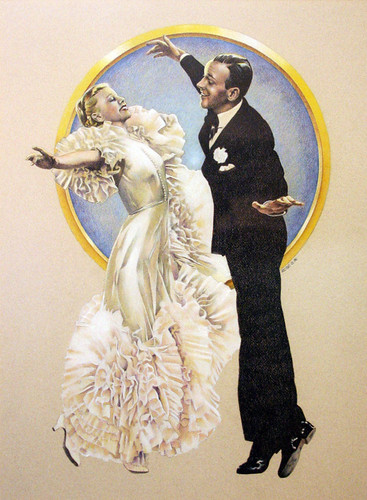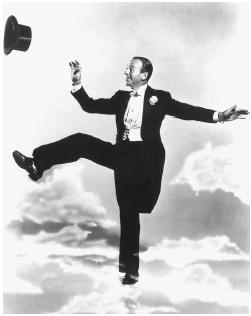[ Greek,
εἰκονογραφία ], literally "image" (εικον) + "writing" (γραφειν).
CAUTION: This will enter upon forbidden territory — but, since it's only writing, there's no harm: you can always say it was fiction. Otherwise the movie police might nab us for talking here about film as anything other than escapism and enterprise. Art is a dirty word in Hollywood.]
Let's consider one of the historical roots of film: that is, film encompassing the history of theater, of musical form, and of visual expression, for example, as well as the history of technology, the history of the media industry, the history of history, etc.
xxxxxxConsider film as a medium of images. Visual storytelling. Pictorial expressivity. I once saw a screening of a silent film by GW Pabst without the German intertitles translated, without knowing what the film would be about, and yet I followed the entire tale as if turning the pages of a novel told in woodblock prints, such as Franx Masereel (1889–1972) and Lyn Ward (1905–1985) used to do.
In Bill Fishman's
Tapeheads (1988), there's a memorable use of image, for example. Ivan Alexeev (John Cusack) and Josh Tager (Tim Robbins) have been fired from their jobs as security guards. What to do with their lives? Suddenly, what seemed to be a burned-out lightbulb goes on over their heads at the same moment as they realize losing their jobs was the best things that ever happened to them. They're free to pursue their destiny: creating a music video production company.
xxxxxxIMuch of the charm of the film comes from pouring old wine into new bottles: two buddies who team up to make it big in show business, etc. The lightbulb moment is an all-time keeper. We literally
see their internal illumination matched by sudden external illumination. It's as if the universe agrees with them: destiny.
xxxxxxIt's an apt use of the visual to show, rather than tell. It's also an old cliché: the lightbulb going on over a character's head, in a comic strip thought balloon. Cartoonists have been using this iconography since before time began, it seems.
Question: where did cartoonists get "lightbulb = idea" from? A Victorian novel? Greek myth? I don't know, but if you're intrigued by the progression, then you might have interest iconography. It's an amazing, if relatively obscure, underrated human endeavor. It's remarkable how much this kind of detective work can unearth, since so much human expression has been visual, rather than written; a viable medium of expression of emotion, thought, inspiration, etc.
xxxxxxIconography usually takes backseat to literary analysis. For example, the story to Sergio Leone's Western
Fistful of Dollars (1964) is quite the same as Akira Kurosawa's
Yojimbo (1961).
Yojimbo is quite similar to Dashiell Hammett's novel
Red Harvest (1929, published exactly as it appeared in pulp serial form). Walter Hill filmed the story as
Last Man Standing (1996) [In 2003, the BBC posted
a comparison of the films.] And where did Dashiell Hammet get the idea from?
xxxxxxBeyond the literary, tho', the visual has influences we can actually see. George Lucas'
Star Wars (1977) not only echoes Kurasawa's
Hidden Fortress (1958) in plot but also many of the wide-screen set-ups. The visual realization of the scary horse head sequence in
The Godfather (1972) has roots in Henry Fuseli's
painting of Nightmare (1781), with its
spectral horse's head, derived from the Irish name for the Scotch war goddess, Mare, bringer of dreams good and bad.
xxxxxxWatching film,
how you look can increase your appreciation for what it looks like: consider lighting, for instance. There's a kind of photography known as "low-key" because it shoots into the low end of the exposure curve, aiming for inky dark shadows punctauted with slabs and pinpoints of light, rather than a look with crisp sparkly vivid "snap" with wide tonal range. You can see it in German Expressionist silent films (
Cabinet of Dr Caligari [1920], most famously, or, for a lesser-known masterpiece,
Warning Shadows [1923]. Moments of it pop up in scenes of American movies especially when Europeans came to work in Hollywood. There's a night scene, out on a balcony, for example, in Frank Borzage's marvelous
History Is Made at Night, underscoring the dark undercurrent of jealousy threatening the sweet tender soft-focus romance between Charles Boyer and Jean Arthur: it both looks back to German Expressionism — and also forward to film
noir.
xxxxxxToday, film noir seems a catchall for anything offbeat, cynical, and crime-related, but it's good to remember it started as a visual style, and as such can apply to any genre: Westerns (
Devil's Doorway, The Furies) comedies (
Sullivan's Travels), romantic historical thrillers (
The Black Book aka
Reign of Terror), even documentaries (
The Thin Blue Line). Conversely, there are films that look noir but aren't, like Ophul's
Letter from an Unknown Woman (1948), a great three-handkerchief weepie.
xxxxxxThe first film to consolidate the lighting styles of German Expressionism as a means of telling a new kind of story is Boris Ingster's
The Stranger on the Third Floor (1940; cinematography by Nicholas Musuraca). Here shots open up with our not being able to tell who it is in the dark: good guy? bad guy? — such thematic role reversal being a signature element in film noir as a style, light and dark normally representing good and bad, but here playing switch, from time to time.
Visual influence seeps more obviously into everyday life, as people emulate what they see. Some film noir fans, for example, love the 1940s–1950s clothes, and dress up accordingly at prime film noir screenings.
Bonnie & Clyde (1967) tried to ride in on winds from the European "New Wave" cinema in its sails, which was, in turn, often influenced by certain Hollywood films — and, in so doing, created a fashion "look" of retro-30's chic modeled in pages of the glossy fashion magazines.
xxxxxxLouise Brooks (1906–1895) became known as "the girl in the black helmet," for her bobbed "Buster Brown – Page Boy" hair cut, still imitated today. She once said she adopted it in emulation of the screen star popular in her day, Colleen Moore (1900–1988), who, in turn, confessed adopting her signature hairstyle from Japanese dolls, (which, in turn ...
xxxxxxht
*/files.myopera.com/Green%20Aya/blog/itimatu1.jpg*
The doll speaks:
"Play with me. Tell me a story ... "







